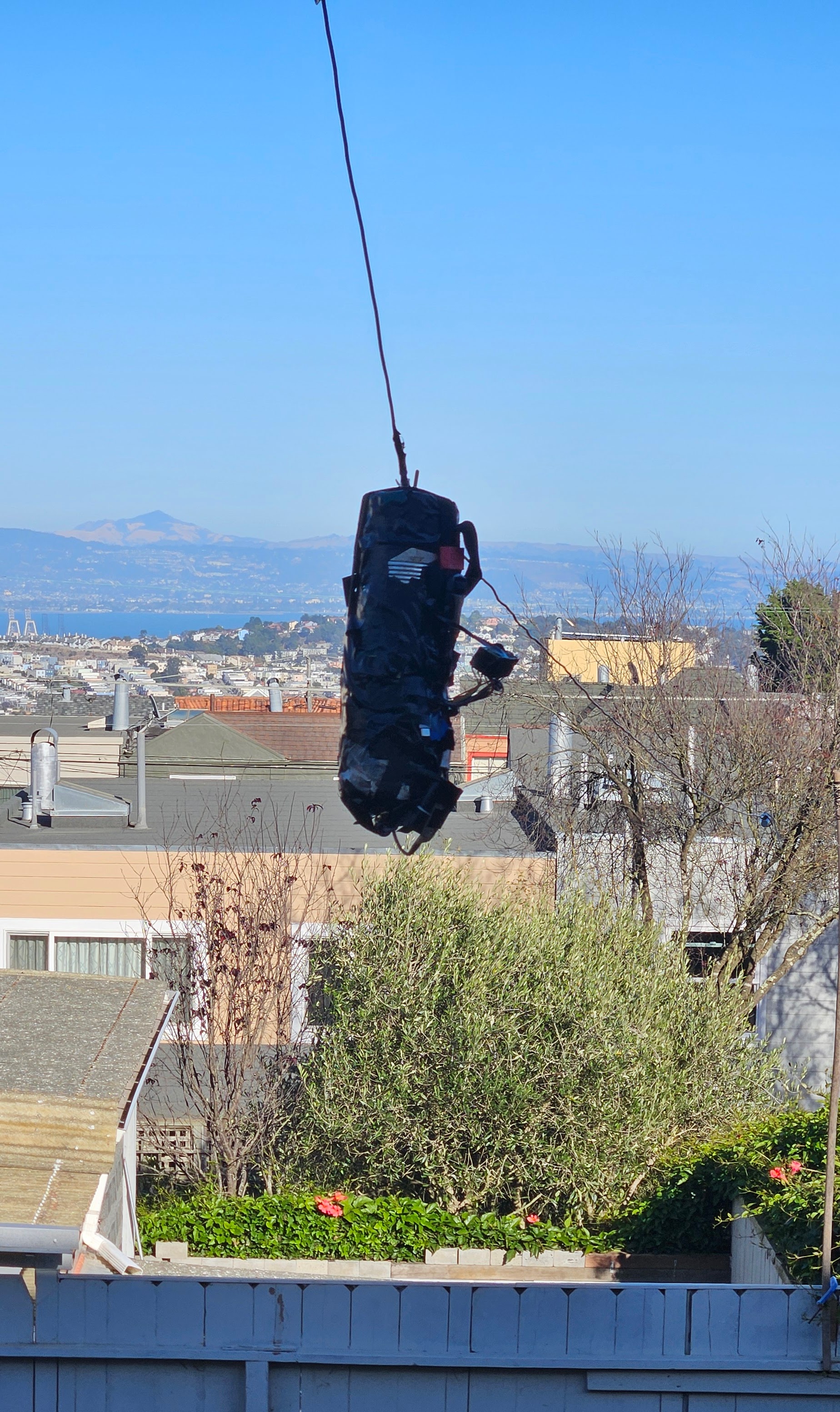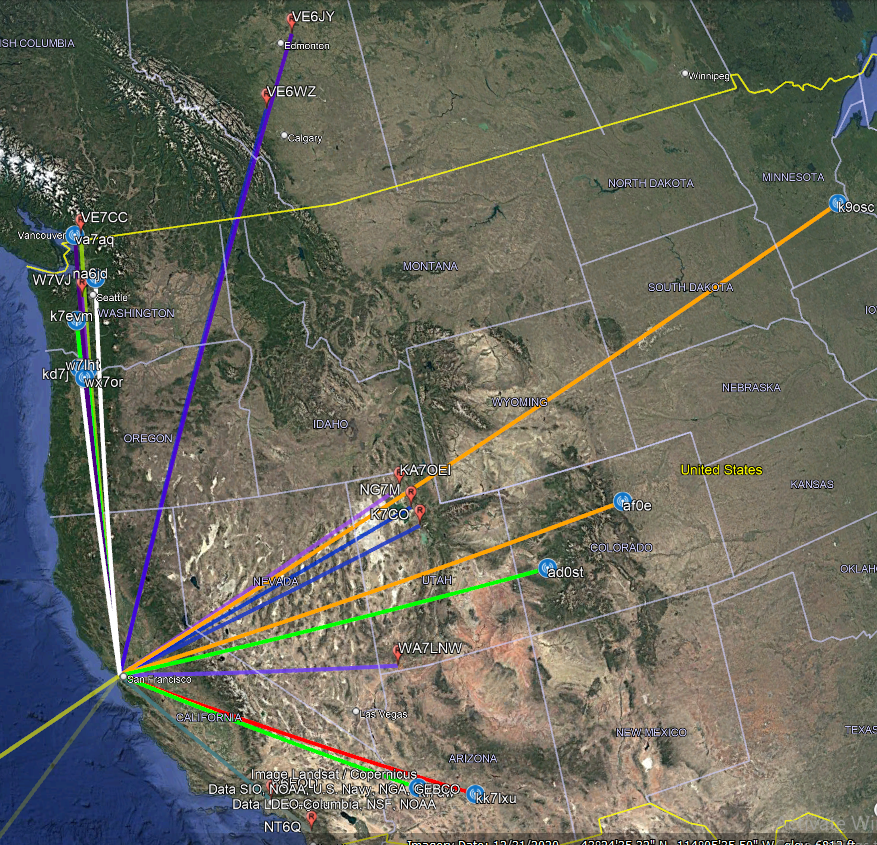I found out this morning that carbon fiber masts are not ideal for mounting vertical antennas. The carbon mast acts as a conductor, (allbeit a poor one), and that throws off the resonant point of the antenna. At least that's the story on the ham radio streets.
One day, I'll try a fiberclass mast to do a caomparison. As mentioned yesterday, our POTA came off without a hitch and with nice signals all around that were comparable to or stronger than the levels we normally get out of Project TouCans. I'm documenting our setup here so we can easily compare it to future deployments and so that others trying the similar things can use the information.
Here's a picture of the setup.
The wire was taped to the mast using electircal tape, with one piece of tape per mast segment. The mast was secured to the edge of a wooden fence using tarred twine.
The rig, (Project TouCans is a 20 m RockMite feeding a Tuna Topper II powered by am Imuto phone charging brick providing 15 Volts DC through a USB-C connector), was laying on it's side on the dock. We usually use it as a dipole setup with the rig suspended in the dipole, (second picture), consequently, we ran one side of the 'horizontal' dipole up the mast and immersed the other side of the dipole at ground, (the seawater about 1.5 meters below the dock.)
And here's a look at the propagation. We were spotted pretty consistently in Australia and once in New Zealand.
I've also added a closer view of the North American RBN spots, (red markers), and QSOs, (blue markers.) The colors of the paths indicate their relative signal strengths. The color coding uses the resistor color code, so for QSOs white indicates a 599 while red and orange represent 229 and 339 respectively. For RBN spots, all dB levels are compared to 40 dB, (a number we thought TouCans would never reach), and white is the highest color level there as well.






Comments
Post a Comment
Please leave your comments on this topic: